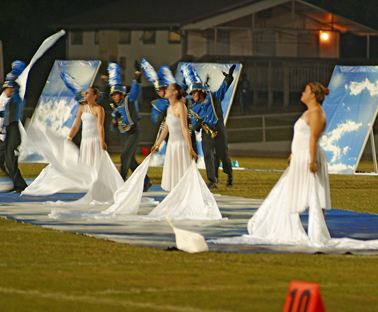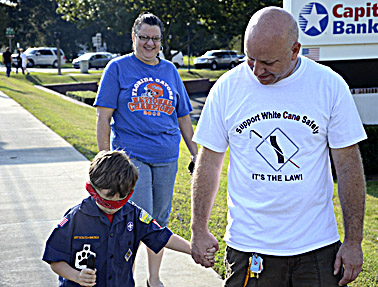Pumpkin patch helps outreach to poor
 A child loads a pumpkin onto a wagon at the pumpkin patch in Alachua. Thirty percent of the profit from sales helps impoverished families.
A child loads a pumpkin onto a wagon at the pumpkin patch in Alachua. Thirty percent of the profit from sales helps impoverished families.
ALACHUA - Dave Risi spent the better part of an afternoon walking through the pumpkin patch located right off U.S. Highway 441 in Alachua, just past Hitchcock's. With his wife, he watched his 13-month-old daughter go through the patch and admire the pumpkins.
“She's having a good time,” he said. As much as she enjoyed the pumpkin patch, though, it has a purpose other than light-hearted fun.
For several years, the First United Methodist Church of Alachua has organized the pumpkin patch, which features hayrides, games and a hay maze up until Halloween. It sells pumpkins and pumpkin-based treats to raise money to help rebuild homes in the Appalachian Mountains.
Some of the houses the church has helped rebuild in the past were without septic tanks or even floors, said Brett Bultemeier, whose wife is the youth director for the church.
“It's kind of shocking,” he said.
Bobbie Ellis went on one of the church trips to the Appalachians. When she went to deliver food to a family, she was upset by what she saw.
“They have nothing,” she said. “I have never seen somebody so poor.”
Seeing the conditions the family lived in caused her to cry, she said.
The pumpkins are grown by the Navajo people in New Mexico, Bultemeier said. The Navajo set the prices and take 70 percent of the profits, while the other 30 percent goes toward helping the less fortunate, said Anne Gay, a member of the church.
This is the 13th year for the pumpkin patch, but it still seems to be popular.
Over the span of an hour, Bultemeier said he had seen seven or eight whole families come to the patch, which is open Monday through Saturday from 9 a.m. until 9 p.m. The busiest times are when school buses bring in children during the middle of the day, said one volunteer.
During a Monday evening a parent and her child loaded up pumpkins of all sizes onto a little wagon. The money from the pumpkins is desperately needed to help the less fortunate, Anne Gay said. There are many ways to help, and some are as simple as buying a pumpkin, she said.
"That's why we're here, to share with others," she said.
# # #
Email cmckinney@
alachuatoday.com
Add a comment

 HIGH SPRINGS – In a hurricane or other serious emergency, the High Springs Police Department (HSPD) is now able to reach stranded travelers, ride over flooded streets, remove or run over fallen trees and reach people in difficult to access locations, with the help of a donation from the United States Department of Defense (DOD).
HIGH SPRINGS – In a hurricane or other serious emergency, the High Springs Police Department (HSPD) is now able to reach stranded travelers, ride over flooded streets, remove or run over fallen trees and reach people in difficult to access locations, with the help of a donation from the United States Department of Defense (DOD).  ALACHUA – With the scent of popcorn and funnel cake lingering in the air, Santa Fe High School had a show to put on.
ALACHUA – With the scent of popcorn and funnel cake lingering in the air, Santa Fe High School had a show to put on. ALACHUA – When the group of people was walking along the sidewalk by U.S. Highway 441 in Alachua, the noise of traffic could be noticed more easily by some than others. Without vision, the other senses they rely on had sharpened.
ALACHUA – When the group of people was walking along the sidewalk by U.S. Highway 441 in Alachua, the noise of traffic could be noticed more easily by some than others. Without vision, the other senses they rely on had sharpened. NEWBERRY – As the sun gleamed through the sky and a breeze swept through, residents descended on downtown Newberry for food, shopping, arts and games.
NEWBERRY – As the sun gleamed through the sky and a breeze swept through, residents descended on downtown Newberry for food, shopping, arts and games.